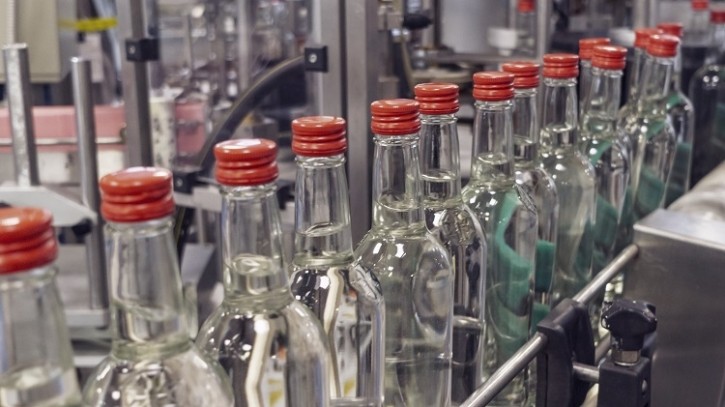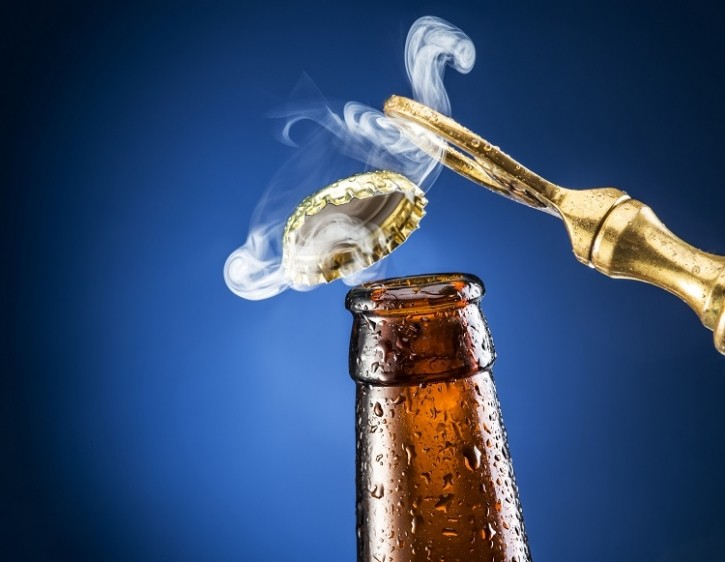Alcohol manufacturing is taken into account a carbon-intensive course of. Not solely does it depend on the cultivation of uncooked supplies similar to grains, beets and potatoes, however the fermentation course of releases a substantial quantity of just about pure CO2.
What if alcohol manufacturing might be disconnected from agriculture, and the CO2 emitted repurposed to supply a brand new sort of alcohol ‘created from air’? That is the concept behind start-up Aircohol’s closed carbon loop know-how, which it says can cut back the carbon footprint of drinks by 50%.
Zero CO2 launched into ambiance
Capturing carbon dioxide from alcohol fermentation is a not a brand new concept. Some distilleries and breweries have carried out carbon seize units, to allow them to reuse that CO2 in their very own manufacturing processes, whether or not to stabilise the carbonation in beer, to carbonate non-alcohol drinks, or to take away oxygen from bottles and cans through the packaging course of.
However this observe stays comparatively unusual. Additional, breweries and distilleries that do set up capturing units, don’t typically seize 100% of the CO2 emitted throughout fermentation as a result of there’s presently no use for it, or enterprise case for doing so.
This places alcohol companies in a tough scenario, in line with founder Simo Hämäläinen. “They’ve an nearly pure CO2 supply that partly or solely goes into the ambiance, however on the similar time they wish to be extra sustainable.” Certainly, the alcohol business is striving in direction of extra sustainable operations. Spirits main Diageo and beer big AB InBev, for instance, have dedicated to web zero emissions throughout their direct operations by 2030 and 2040 respectively.
Finland-based Aircohol has developed know-how that allows captured carbon for use as a uncooked materials within the manufacturing of a brand new kind of alcohol by breweries and distilleries. “We take that CO2 and feed it into Aircohol course of,” Hämäläinen defined. “We now have developed a novel bioreactor and a plant-based bioprocess that gives optimum progress situations to develop and produce biomass.”
Whereas Aircohol’s patent is pending, the corporate stays tight-lipped about which plant-based enter helps encourage biomass manufacturing.
The biomass then goes again into the brewery or distillery’s alcohol fermentation course of, to supply extra drinks. The beginning-up says its know-how may be ‘seamlessly’ built-in into current brewery or distillery manufacturing processes, making a sustainable carbon loop and making certain zero CO2 is launched into the ambiance.

Since Aircohol itself is just not a carbon seize nor a drinks firm, it sees itself as taking part in a central position in connecting these two operations. “We’re the round financial system piece of the method,” the founder advised this publication. “We don’t seize the carbon and we don’t manufacture the drinks – that’s the job of the distillery or brewery.”
A brand new alcohol utterly disconnected from agriculture
Not like typical alcohol manufacturing, the one exterior ingredient required to supply alcohol with Aircohol know-how is CO2. “We don’t want something from the sphere. We don’t want barley [as is used in whisky or beer] or potatoes [for vodka]. We reduce your entire carbon footprint from the rising and sourcing of uncooked supplies, which may be important in lots of circumstances,” the founder
defined.
Certainly, as soon as Aircohol’s know-how is up and operating, the ensuing alcohol produced is sort of utterly disconnected from agriculture – aside from the undisclosed plant-based ingredient. As an alternative of the standard year-long look ahead to conventional alcohol-producing crops to mature, Aircohol’s ‘harvest season’ lasts a mere couple of days.
Breweries and distilleries can use the brand new alcohol how they please, whether or not that’s by itself as a spirit, or combined in with current elements for a carbon-reduced beer or juniper-infused gin. The beginning-up is happy concerning the prospects, on condition that its know-how will produce a ‘new flavour profile’ for corporations to play with.
“Companies can handle how a lot of that flavour they wish to keep. It might be distilled to ABV 96% as a vodka after which blended again to ABV 40%, when there can be little or no style from Aircohol’s ingredient,” Hämäläinen defined. If distilled to ABV 60% nonetheless, shoppers would be capable of style the ingredient, providing ‘new flavours and new alternatives’, he stated.
In beer manufacturing, the brewer would exchange a part of its barley or wheat content material with Aircohol’s ingredient to cut back CO2 emissions and add its distinctive flavour profile.
Certainly, Aircohol has already entered a strategic collaboration with alcohol firm Brukett in Finland. Plans are underway to upscale the know-how to industrial dimension and provoke manufacturing of the ‘world’s most sustainable drinks’ in 2024.
“Collaborating with Aircohol aligns immediately with our technique: we wish to take revolutionary and even radical steps to cut back the environmental impacts of our operations,” commented Brukett CEO Mikko Ali-Melkkilä on the collaboration. “It’s important for our enterprise that we are able to produce tasty drinks with minimal environmental influence, accompanied by an attractive story.”
Growing ‘greener’ booze to adjust to EU legislation
Analysis suggests shoppers wish to purchase sustainable foods and drinks. A current survey carried out by IPSOS discovered that 58% of Europeans contemplate the local weather influence essential when shopping for meals and drinks, whereas 31% of Europeans stated they already make sustainable selections in terms of their shopping for habits.
That is mirrored in NPD throughout the alcohol business. Earlier this 12 months, for instance, London-based brewery Gipsy Hill claimed a ‘world first’ in creating carbon detrimental beers with out the usage of offsets. The idea relies on regenerative farming.
However R&D can be taking part in a job within the growth of ‘greener’ booze choices. Over within the US, Air Firm is utilizing renewable power to transform carbon from the air into alcohol. Comprised of simply carbon dioxide and water, it’s one other method of manufacturing ‘alcohol from air’.
For EU-based Aircohol, this technique is off the desk. “In the beginning we checked out other ways to supply alcohol from CO2. In accordance with EU legislation alcohol have to be produced from agricultural supply, so each know-how is just not appropriate or would require an extended Novel meals approval course of,” defined Hämäläinen.
One other firm producing meals ‘from air’ is Finland-headquartered Photo voltaic Meals. Aircohol additionally investigated its strategy, which relies on a bioprocess whereby microbes are fed with gases (carbon dioxide, hydrogen and oxygen) and small quantities of vitamins. However since Photo voltaic Meals is creating a novel microbial protein that should endure Novel Meals approval earlier than being marketed within the EU, the Aircohol founders once more regarded elsewhere.
The result’s a course of that makes use of elements already recognized to the Novel Meals register, and due to its plant-based enter, aligns with the EU’s agricultural requirement for alcohol.

Aircohol lately secured €2.4m in funding and thru its collaboration with Brukett is already testing vodka and beer, in addition to non-alcohol drinks, for the market. “Our subsequent step is to scale the know-how to industrial dimension and along with Brukett, start producing drinks to the patron markets.”


